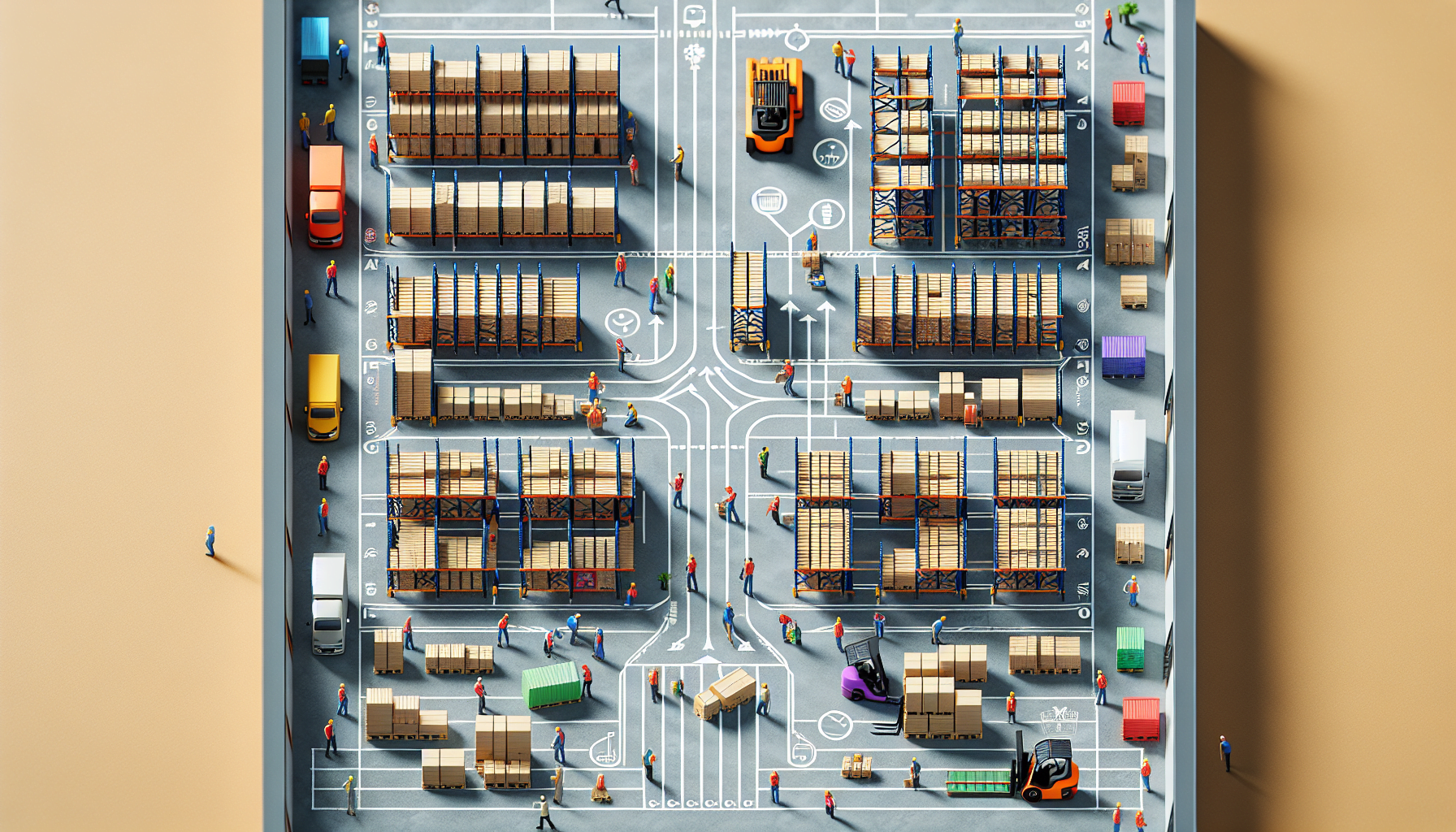Did you know that the layout of a warehouse can have a significant impact on space utilization? Warehouse layout plays a crucial role in determining the efficiency, productivity, and overall success of warehouse operations. It involves the strategic arrangement of storage areas, workstations, equipment, and pathways, all with the goal of maximizing space utilization.
The Importance of Optimal Warehouse Layout
An optimal warehouse layout is essential for several reasons:
- Maximizing Storage Capacity: A well-designed layout ensures that every inch of space is effectively utilized, allowing for maximum storage capacity. By optimizing the arrangement of racks, shelves, and aisles, warehouses can accommodate more inventory and minimize wasted space.
- Improving Efficiency: A well-organized warehouse layout reduces the time and effort required to locate and retrieve items. When the layout is intuitive and logical, it becomes easier for workers to navigate the warehouse, resulting in improved operational efficiency.
- Enhancing Safety: An optimized layout prioritizes safety by creating clear pathways, separating pedestrian and equipment traffic, and ensuring that emergency exits are easily accessible. This reduces the risk of accidents and injuries in the warehouse.
- Increasing Productivity: A well-planned layout facilitates a smooth flow of goods, minimizing bottlenecks and delays. This leads to increased productivity as workers can easily access the items they need, reducing downtime and improving order fulfillment speed.
- Reducing Costs: By making the most efficient use of space, a well-designed warehouse layout can reduce the need for additional storage space, saving on rental or construction costs. It also optimizes labor utilization, reducing unnecessary movement and improving the overall utilization of resources.
Given the numerous benefits, optimizing warehouse layout should be a priority for any business striving for warehouse excellence. Let’s explore some key factors that influence warehouse layout decisions:
Key Factors Influencing Warehouse Layout
- Storage Requirements: The type of products being stored plays a crucial role in determining the layout. Different storage systems, such as pallet racking, mezzanine floors, or shelving units, may be required based on the size, shape, and weight of the products.
- Product Flow: The flow of products through the warehouse is another critical aspect to consider. It is important to design the layout in a way that optimizes the movement of goods, ensuring a logical sequence for receiving, storing, picking, and shipping.
- Equipment and Machinery: The type of equipment and machinery used in the warehouse also impacts layout decisions. Forklifts, conveyors, and automated systems need sufficient space and clear pathways to operate efficiently.
- Worker Safety and Comfort: A safe and comfortable working environment is important for warehouse staff. Factors such as lighting, ventilation, ergonomic workstations, and clear sightlines all contribute to worker satisfaction and efficiency.
- Future Expansion: It is essential to consider future growth and expansion plans when designing a warehouse layout. Flexibility should be built into the layout to accommodate changes in inventory levels, product mix, or operational processes.
Warehouse layout evaluation is a critical step in optimizing space utilization. By partnering with experts like HCO Innovations, businesses can ensure a thorough analysis of their current layout and receive recommendations for improvements. HCO Innovations specializes in warehouse optimization solutions, offering innovative strategies to enhance safety, productivity, efficiency, and cost-effectiveness within warehouse operations.
Conclusion
An optimal warehouse layout is essential for maximizing space utilization and improving overall operational efficiency. By considering key factors such as storage requirements, product flow, equipment, worker safety, and future expansion, businesses can design a layout that supports their specific needs and goals. To ensure the best results, it is advisable to seek the expertise of professionals in warehouse optimization, such as HCO Innovations, who can provide tailored solutions and strategies.

